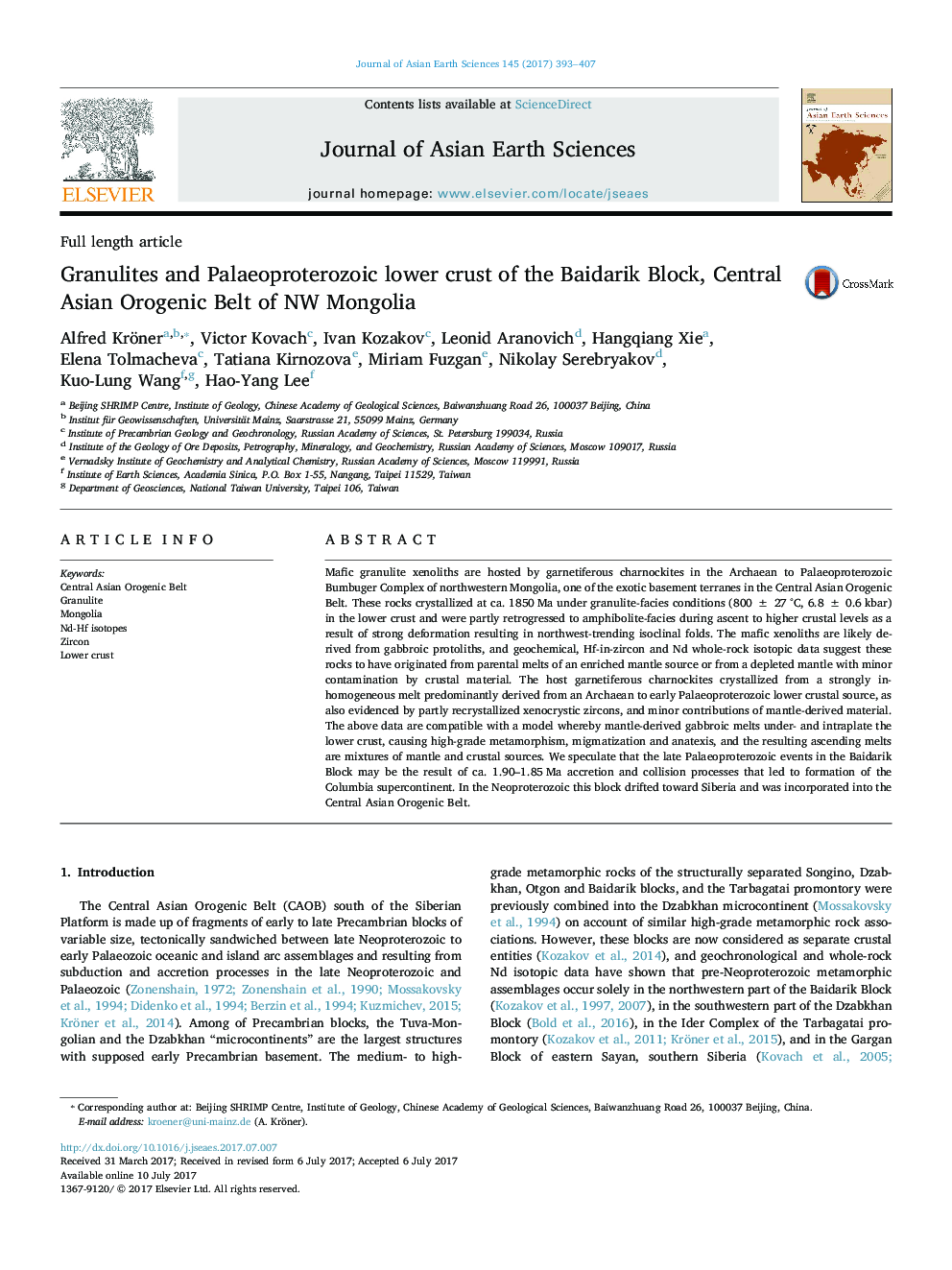| کد مقاله | کد نشریه | سال انتشار | مقاله انگلیسی | نسخه تمام متن |
|---|---|---|---|---|
| 5785805 | 1414086 | 2017 | 15 صفحه PDF | دانلود رایگان |
- Lower crustal rocks of the Baidarik Block in NW Mongolia formed at ca. 2500, 2370 and 1850Â Ma.
- Ca. 1850Â Ma garnetiferous charnockites host mafic xenoliths likely derived from gabbroic protoliths.
- Mantle-derived mafic melts under- and intraplated the lower crust at ca. 1850Â Ma.
- Crust-mantle interaction produced mixed Hf and Nd isotopic signatures.
Mafic granulite xenoliths are hosted by garnetiferous charnockites in the Archaean to Palaeoproterozoic Bumbuger Complex of northwestern Mongolia, one of the exotic basement terranes in the Central Asian Orogenic Belt. These rocks crystallized at ca. 1850 Ma under granulite-facies conditions (800 ± 27 °C, 6.8 ± 0.6 kbar) in the lower crust and were partly retrogressed to amphibolite-facies during ascent to higher crustal levels as a result of strong deformation resulting in northwest-trending isoclinal folds. The mafic xenoliths are likely derived from gabbroic protoliths, and geochemical, Hf-in-zircon and Nd whole-rock isotopic data suggest these rocks to have originated from parental melts of an enriched mantle source or from a depleted mantle with minor contamination by crustal material. The host garnetiferous charnockites crystallized from a strongly inhomogeneous melt predominantly derived from an Archaean to early Palaeoproterozoic lower crustal source, as also evidenced by partly recrystallized xenocrystic zircons, and minor contributions of mantle-derived material. The above data are compatible with a model whereby mantle-derived gabbroic melts under- and intraplate the lower crust, causing high-grade metamorphism, migmatization and anatexis, and the resulting ascending melts are mixtures of mantle and crustal sources. We speculate that the late Palaeoproterozoic events in the Baidarik Block may be the result of ca. 1.90-1.85 Ma accretion and collision processes that led to formation of the Columbia supercontinent. In the Neoproterozoic this block drifted toward Siberia and was incorporated into the Central Asian Orogenic Belt.
237
Journal: Journal of Asian Earth Sciences - Volume 145, Part B, 1 September 2017, Pages 393-407
